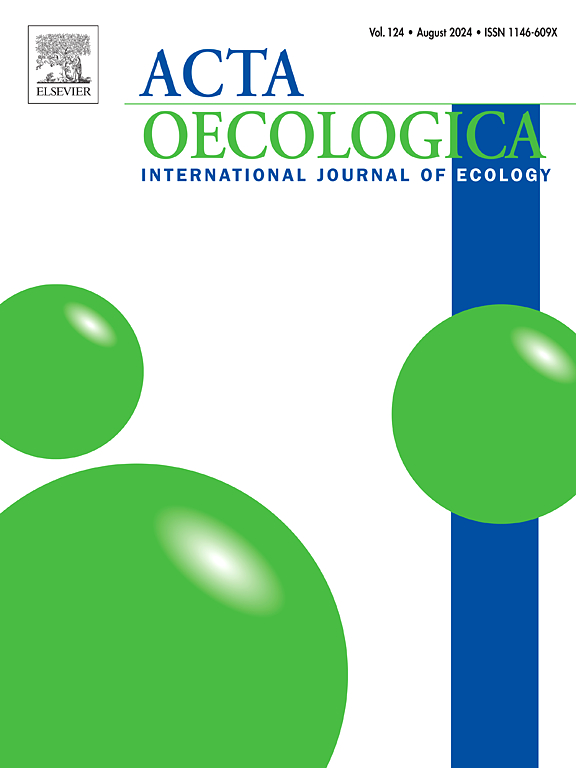自然因素还是人为干扰:是什么影响了黑松鸡在其连续活动范围边缘的出现?
IF 1.3
4区 环境科学与生态学
Q3 ECOLOGY
Acta Oecologica-International Journal of Ecology
Pub Date : 2025-06-04
DOI:10.1016/j.actao.2025.104095
引用次数: 0
摘要
黑松鸡属于一种对环境变化敏感的鸟类。其数量的减少可能是栖息地状况恶化的信号。在这项研究中,我们分析了一些预测因素对该物种在其最后一个中欧山区避难所之一-波兰塔特拉山脉中的发生的影响。该研究旨在了解该物种的土地利用情况,并确定其生存的最重要因素。我们的研究结果表明,土地覆盖在研究的其他因素中占主导地位。矮灌木的存在促进了黑松鸡的发生。与周边植被提供的食物、渗漏点和森林覆盖面积呈正相关。发生地点周围的裸岩覆盖度与高旅游压力呈负相关。人为干扰对该物种的发生有负面影响,但影响程度低于生境质量。然而,它可能被认为是生境破碎化的因素。我们的研究结果强调,在研究生物和非生物因素对种群下降的影响时,需要考虑大的空间尺度,这在物种连续范围的边缘尤其重要。为了保护,将我们的结果与繁殖成功率和气候变化对当地生物群落形成的影响的数据结合起来也是最佳的。本文章由计算机程序翻译,如有差异,请以英文原文为准。
Natural factors or human disturbance: What shapes the occurrence of black grouse Lyrurus tetrix on the edge of its continuous range?
The black grouse belongs to a group of birds sensitive to environmental changes. A decrease in its numbers may signal the deteriorating habitat condition. In this study, we analyzed the impact of a number of predictors on the species' occurrence in one of its last Central European, mountainous refuge - the Polish Tatra Mountains. The study aimed to understand the land use of the species and identify the most important factors for its survival. Our results indicate the predominance of land cover over the other factors studied. Particularly, the presence of dwarf shrubs promoted the occurrence of black grouse. It showed a positive correlation with vegetation providing food and lekking sites and land cover by forest in the surroundings. A negative relationship was found with bare rock cover and high tourist pressure around the occurrence sites. Human disturbance had a negative impact on the species' occurrence, but it was less significant than habitat quality. However, it may be considered a habitat-fragmenting factor. Our results highlight the need to consider a large spatial scale when studying the effects of biotic and abiotic factors on a declining population, which is particularly important on the edge of the species’ continuous range. For conservation, it would also be optimal to incorporate our results along with data on reproductive success and the impact of climate change on shaping the local biotope.
求助全文
通过发布文献求助,成功后即可免费获取论文全文。
去求助
来源期刊
CiteScore
3.60
自引率
0.00%
发文量
57
审稿时长
>0 weeks
期刊介绍:
Acta Oecologica is venue for the publication of original research articles in ecology. We encourage studies in all areas of ecology, including ecosystem ecology, community ecology, population ecology, conservation ecology and evolutionary ecology. There is no bias with respect to taxon, biome or geographic area. Both theoretical and empirical papers are welcome, but combinations are particularly sought. Priority is given to papers based on explicitly stated hypotheses. Acta Oecologica also accepts review papers.

 求助内容:
求助内容: 应助结果提醒方式:
应助结果提醒方式:


